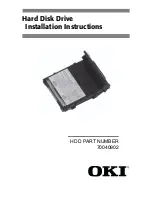
Chapter 9. Administration - Logical Tab
249
Draft Document for Review March 28, 2011 12:24 pm
7914Admin_Logical.fm
Some logical drives which are used just to store temporary data only, can have cache
mirroring disabled, but be sure you can regenerate the data again easily, as you can lose
them if one controller fails.
By default, write cache is always mirrored to the other controller to ensure proper contents,
even if the logical drive moves to the other controller. Otherwise, the data of the logical drive
can be corrupted if the logical drive is shifted to the other controller and the cache still
contains unwritten data. If you turn off this parameter, you risk data loss in the case of a
controller failover, which might also be caused by a path failure in your fabric.
The cache of the DS3500 storage subsystem is protected by a battery against power loss. If
the batteries are failed or not fully charged, for example, just after powering on, the controllers
automatically disable the write cache. If you enable the parameter, the write cache is used,
even if no battery backup is available, resulting in a higher risk of data loss. We recommend
that the controller write cache mirroring be left enabled for data integrity reasons in case of a
controller failure.
Write-Through
Write-through means that writing operations do not use cache at all. The data is always going
to be written directly to the disk drives. Disabling write caching frees up cache for reading
(because the cache is shared for read and write operations).
Write caching can increase the performance of write operations. The data is not written
straight to the disk drives; it is only written to the cache. From an application perspective, this
is much faster than waiting for the disk write operation to complete. Therefore, a significant
gain in application writing performance can be expected. It is the responsibility of the cache
controller to eventually flush the unwritten cache entries to the disk drives.
Write cache mode (Write-Back) appears to be faster than Write-Through mode, because it
increases the performance of both reads and writes. But this is not always true, because it
depends on the disk access pattern and workload.
A lightly loaded disk subsystem usually works faster in write-back cache mode, but when the
workload is high, the write cache can become inefficient. As soon as the data is written to the
cache, it has to be flushed to the disks in order to make room for new data arriving into cache.
The controller performs faster if the data goes directly to the disks. In this case, writing data to
the cache can be an unnecessary step that decreases throughput.
Dynamic cache read prefetch
Cache read-ahead, or “prefetch,” allows the controller, while it is reading and copying
host-requested data blocks from disks into the cache, to copy additional data blocks into the
cache. This increases the chance that a future request for data will be fulfilled from the cache.
Cache read prefetch is important for multimedia applications that use sequential I/O.
This feature uses an automatic pre-fetching multiplier to maximize its cache hit efficiency and
system performance. This will turn on monitoring of the I/O to the logical drive and enable the
new algorithm to dynamically choose how much to read ahead. This simplifies the process for
the administrator, as there is no need to manually set a specific value for the read ahead
multiplier. The system will tune itself depending on the I/O characteristics. When sequential
access is detected, the controller will automatically start using read ahead buffering. When
random or non-sequential I/O is used, then it will stop using the read ahead buffer. To disable
this feature, simply uncheck the Dynamic Cache Read Prefetch check box for the relevant
logical drive.
Summary of Contents for DS3500
Page 2: ......
Page 5: ...iii Draft Document for Review March 28 2011 12 24 pm 7914edno fm ...
Page 789: ......
















































